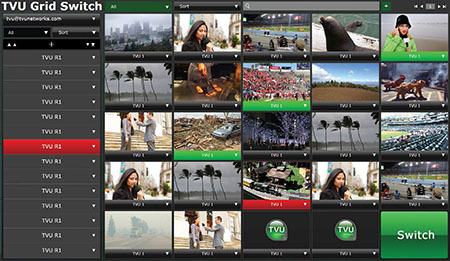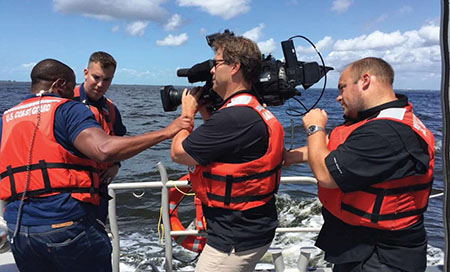Bonded Cellular Shined in Storm Coverage
MIAMI—As vacationers and residents of southern coast states evacuated to avoid 2017’s mega-storms Harvey and Irma, crews of journalists poured into locations they expected to take direct hits from the hurricanes. They joined local news crews who stayed behind to tell their absent viewers what they were missing out on.
A vital tool that played a large role in reporting live out of those disaster zones was cellular liveshot gear, which provided portability and reliability. Some of the credit for that reliability goes to the cellular liveshot equipment makers, but certainly some must go to the cellular network operators.
NO ‘BATTLE FOR BANDWIDTH’
Scripps used TV U’s Grid platform to route its signal from Detroit to Ft. Myers, Fla.“The LTE networks remained strong,” said Ray Thurber, vice president of engineering at station group E.W. Scripps. “Because so many people had evacuated the area, there wasn’t that battle for bandwidth that could be there on a normal day.”

In addition to the local south Florida news crews who stayed in place, Scripps sent 60 news employees from its stations not in a hurricane’s path to augment storm coverage and provide reporting to other stations by familiar correspondents. They used TVU and LiveU liveshot gear, and also had success with a Sony system that integrates a cellular stick into the camera. They also incorporated satellite and microwave equipment into their live-shots.
Independent news photographer Larry Collins was contacted by CNN and sent, along with a producer and reporter, to the Tampa Bay area. They did their first day of the storm reporting from a hotel across the street from the airport. “I think we had gusts of up to 110, 120 miles an hour,” Collins said.
The hotel’s covered check-in drive-through had large supporting columns that Collins put to use. “I had my HMI lights cinched up to them, illuminating the background of the parking lot,” he said. “And I could stay behind another column, which broke the wind and let me stay in place.” He said if he’d moved out of the windbreak the column provided, he’d have been blown across the drive. His reporter could stand out in the rain some of the time, and then duck behind the column where he could answer questions from the CNN news anchors. “We couldn’t have done the shot with a satellite truck.”
Collins said he had a great signal through his LiveU gear, except for one brief period. “We were getting ready to go live with a robust signal, and then everything disappeared, all the bandwidth went away. And it lasted about four minutes and then came back. I don’t know if there was a reboot somewhere or what.”
The professional video industry's #1 source for news, trends and product and tech information. Sign up below.
Since the hotel’s Wi-Fi and internet access was still working during the storm, Collins had an ace in the hole that he didn’t have to use. “You can utilize that through the LiveU,” he said. “We didn’t have to use that, but some friends of mine doing news reports from Puerto Rico told me that because cellular service was down, Wi-Fi was the only way they could get out.”

Independent news photographer Larry Collins used LiveU’s bonded cellular technology to cover a Coast Guard buoy inspection on CNN , 15 miles offshore.
CROSS-COUNTRY ROUTE
On day three of his storm coverage, Collins’ producer arranged for them to ride aboard a Coast Guard vessel that was inspecting Tampa Bay for new hazards and mislocated buoys before allowing large ships, carrying vital supplies such as gasoline, to deliver their cargo. “We were 10, maybe 15 miles off shore and still able to get live signals back to CNN’s various networks and platforms.”
Scripps’ Thurber said a large part of the success the company had with its disaster coverage was due to their preparations. “We have an Enterprise Response Team for situations like hurricanes, and we mobilized it early,” he said. “The individual stations in the affected markets have hurricane plans as well.”
Thurber added that Scripps used TVU’s Grid platform to “relocate” the newsroom from WFTX-TV’s Fort Myers, Fla. facility to Detroit, allowing them to route a control room around the country. They sent digital platform material over to Indianapolis and routed the news coverage back down to Florida where it was broadcast over the Fox affiliate.
In years past, cellular liveshot gear was used by news journalists with intermittent success. As the liveshot equipment and the cellular networks themselves have become ever more reliable, it’s become a tool that can be counted on.
